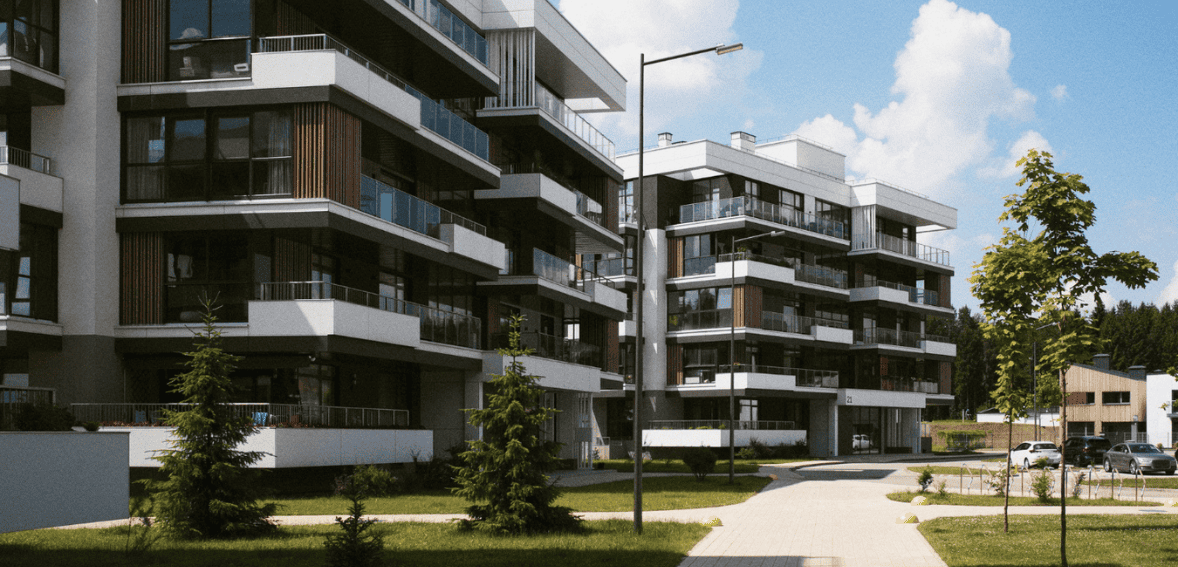How Much Does Tenant Turnover Cost?
- February 21, 2023
- Property Manager
- Category: Rent & Security Deposits

Welcome to the world of property management! Property management can be a powerful tool that requires attention to detail and the ability to act swiftly.
One of the biggest challenges in property management is tenant turnover, and it’s essential to understand its costs.
If you’re a property owner, manager, or real estate investor, understanding tenant turnover costs is essential to keeping your business profitable and successful.
Tenant turnover is the process of tenants leaving a property and new tenants moving in. While it’s a natural part of the property management process, it can be costly if not managed effectively.
In this blog post, we’ll cover everything you need to know about tenant turnover and its costs.
We’ll explore the factors that contribute to tenant turnover, calculate tenant turnover costs, and provide tips and strategies for minimizing turnover and reducing costs.
By the end of this post, you’ll have a better understanding of how to keep your properties occupied and your business thriving.
So, let’s suit up and dive in!
Understanding Tenant Turnover
As a property owner, you might think tenant turnover is just a normal part of business, but it’s a more significant concern than you might realize. Tenant turnover is the process of tenants leaving a property and new tenants moving in. While it’s inevitable that tenants will come and go, high tenant turnover rates can be costly and damaging to your business.
Why Is Tenant Turnover A Concern for Property Owners and Managers?
First of all, vacancy costs can be high. When a tenant moves out, you’ll likely have to spend money on marketing to find a new tenant, and you’ll lose income when the unit is vacant. Additionally, tenant turnover can be brutal on the property itself. Each time a tenant moves out, you’ll need to spend time and money getting the unit ready for the next tenant. It can include things like cleaning, painting, and repairs.
According to the National Apartment Association, apartments’ average annual turnover rate is around 50%. That means that for every ten tenants, 5 of them will move out each year. The turnover rate can be even higher in certain areas or for certain types of properties, such as low-income housing.
High turnover rates are expensive and can also be a sign of more significant issues with your property management strategy. If tenants leave your property frequently, it could be a sign that you need to change your approach. By understanding the causes of tenant turnover, you can take steps to reduce turnover rates and improve your business.
Factors That Contribute to Tenant Turnover
Many factors can contribute to tenant turnover. Some of the most common factors include the following:
- Rent increases: If tenants feel like their rent is too high, they may look for a more affordable option elsewhere.
- Maintenance issues: If tenants experience problems that need to be resolved quickly, they may become frustrated and decide to move out.
- Disputes with landlords: If tenants feel like they aren’t being treated moderately or have disagreements with their landlords, they may decide to move out.
- Job or life changes: Sometimes, tenants need to move due to job changes or other circumstances outside your control.
Understanding these factors allows you to develop strategies to reduce tenant turnover and keep your properties occupied.
Factors that Influence Tenant Turnover
As we discussed earlier, tenant turnover can be expensive and damaging to your business. But what factors contribute to high rates of tenant turnover? Here are some of the most common factors:
-
Rent Increases
One of the most common reasons tenants decide to move out is rent increases. If tenants feel like their rent is too high, they may look for a more affordable option elsewhere. It’s important to note that rent increases are often necessary to keep up with the market, but if rent increases are too frequent or too high, they can contribute to high turnover rates.
-
Maintenance Issues
Another common factor that can contribute to tenant turnover is maintenance issues. If tenants experience problems with their units or the property that need to be resolved quickly, they may become frustrated and decide to move out. It’s essential to prioritize maintenance requests and ensure tenants feel heard and cared for.
-
Disputes with Landlords
Sometimes, disputes with landlords can lead to tenant turnover. If tenants feel they aren’t being treated moderately or have disagreements with their landlords, they may decide to move out. Maintaining good communication with tenants and addressing any concerns they may have is essential.
-
Job or Life Changes
Finally, some tenants need to move due to job changes or circumstances outside your control. While you can’t prevent all job or life changes, you can work to make your properties more attractive to tenants, so they’re more likely to stay.
How do These Factors Impact the Cost of Tenant Turnover?
So how do these factors impact the cost of tenant turnover? As we discussed earlier, each time a tenant moves out, you’ll need to spend time and money getting the unit ready for the next tenant. It can include things like cleaning, painting, and repairs. Additionally, you’ll likely have to spend money on marketing to find a new tenant and lose income when the unit is vacant.
If you have high turnover rates, these costs can quickly add up. You can help reduce these costs and improve your business by addressing the factors that contribute to tenant turnover.
Calculating the Costs of Tenant Turnover
Now that we’ve discussed the factors contributing to tenant turnover, let’s take a closer look at the costs associated with turnover. By understanding these costs, you can make better-informed decisions about reducing turnover and improving your business.
The costs of tenant turnover can be broken down into four main categories:
-
Vacancy Costs
The first cost associated with tenant turnover is a vacancy. Each day that your unit sits empty, you’re losing money. Depending on your market and location, the time it takes to find a new tenant can vary. However, on average, a vacant unit can cost anywhere from one to three months’ rent.
-
Marketing Costs
Once your unit is vacant, you’ll need to spend money on marketing to find a new tenant. It can include things like online ads, flyers, and signage. Depending on your marketing strategy, these costs can range from a few hundred to a few thousand dollars.
-
Turnover Preparation Costs
When a tenant moves out, you’ll need to spend money preparing the unit for the next tenant. It can include things like cleaning, painting, and repairs. These costs can range from $1,000 to $5,000 per turnover.
-
Repairs and Maintenance Costs
Finally, when a tenant moves out, you may discover additional repairs or maintenance issues that need to be addressed before the unit can be rented again. These costs can vary widely depending on the condition of the team and the types of repairs required.
Examples and Case Studies
To help illustrate the potential costs of turnover, let’s take a look at some examples and case studies:
- Example 1: A small studio apartment rents for $1,500 per month. When the tenant moves out, the unit sits vacant for two months before a new tenant is found. In addition to the lost rent, the landlord spends $1,500 on marketing and $2,000 on turnover preparation. The total cost of turnover is $6,500.
- Example 2: A three-bedroom townhouse rents for $2,500 per month. When the tenant moves out, the unit sits vacant for three months before a new tenant is found. In addition to the lost rent, the landlord spends $3,000 on marketing and $5,000 on turnover preparation and repairs. The total cost of turnover is $18,500.
As you can see, turnover costs can quickly add up, especially for more significant properties or properties in competitive markets.
Minimizing Tenant Turnover
As a savvy property owner or manager, you know that tenant turnover can be a significant headache – not to mention a major drain on your bottom line. But fear not, my friends, because there are strategies you can use to minimize turnover and keep your tenants happy.
-
Improving Tenant Communication
One key strategy is to focus on improving communication with your tenants. It means using technology to streamline communication and provide timely responses to tenant requests and concerns. Using tools like online portals or mobile apps, you can make it easy for tenants to report maintenance issues or ask questions and ensure that they receive prompt, helpful responses. It can go a long way toward building trust and fostering a positive relationship with your tenants.
-
Addressing Maintenance Issues Promptly
Another essential strategy is to address maintenance issues promptly. By conducting regular inspections and repairs and providing tenants with clear expectations for maintenance and repairs, you can help prevent minor issues from turning into major headaches. It helps keep your current tenants happy and satisfied and reduces the likelihood that they’ll decide to move out.
-
Offering Incentives for Lease Renewals
One of the most effective strategies for minimizing tenant turnover is offering lease renewal incentives. It might include rent discounts, other perks for renewals, or longer lease terms for stable tenants. By making it financially advantageous for tenants to renew their leases, you can reduce the likelihood that they’ll decide to move out at the end of their current lease term.
-
Building A Sense of Community
Finally, another strategy for minimizing tenant turnover is to build a sense of community in your building or complex. It might mean providing common areas for social interaction, such as a community room or outdoor space, or hosting events or activities for tenants.
By creating opportunities for tenants to get to know each other and feel more connected to their living area, you can help build a stronger, more sustainable community – and keep your tenants happy and more likely to renew their leases.
Conclusion
Now that we’ve gone over the nitty-gritty of tenant turnover and its costs, it’s clear that this is not an issue that should be taken lightly. As a property owner or manager, it’s crucial to understand the various factors that can contribute to tenant turnover and the costs associated with it.
Taking a proactive approach to tenant retention and implementing strategies to minimize turnover can save you significant time, money, and headaches in the long run. It includes improving communication with tenants to address maintenance issues promptly and offering lease renewal incentives.
Remember, a high tenant turnover rate impacts your bottom line and can harm your reputation as a property owner or manager. By prioritizing tenant satisfaction and minimizing turnover, you’ll save money and create a more positive and profitable rental experience for everyone involved.
So, go forth and use the knowledge you’ve gained from this blog post to make smarter decisions when it comes to tenant turnover. Your tenants and your wallet will thank you for it!




